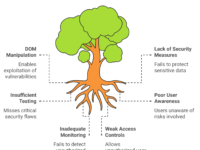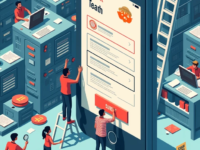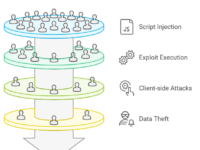Testing is no longer a step that follows coding; it’s a continuous journey that weaves through every phase of the development lifecycle. If you’ve been keeping an eye on the latest trends, you might have heard the buzz around Shift-Left and Shift-Right Testing. But what do these terms really mean, and how can they revolutionize your testing strategy? Let’s dive in!
What is Shift-Left and Shift-Right Testing?
- Shift-Left Testing means incorporating testing in the early phases of development.
- It helps catch defects before they make it to production, reducing rework and cost.
- Encourages collaboration between development and testing teams.
- Helps accelerate delivery with fewer post-release bugs.
- Shift-Right Testing focuses on testing in production.
- Allows monitoring of the application in real-time.
- Uses performance data and user feedback to identify issues after release.
- Ensures the product behaves as expected under actual user conditions.
Why Should You Care? The Trends Driving Change
You might wonder, “What’s the big deal?” The truth is, Shifting Left and Right is not just a trend; it’s a necessity in today’s agile world. Here are some compelling reasons to embrace these practices:
- Increased Efficiency: A report from McKinsey revealed that companies implementing Shift-Left Testing experienced up to 30% faster release cycles. By identifying defects early, teams can focus on building features rather than fixing bugs.
- User-Centric Development: As highlighted by Forrester, organizations that adopt Shift-Right Testing report 25% improved customer satisfaction scores. Monitoring user interactions allows teams to understand real-world performance and make informed adjustments.
- Cost Savings: According to IBM, fixing a bug during development is 30 times cheaper than addressing it after deployment. By shifting testing left, you save both time and money.
The Tools You Need for Successful Implementation
| Type of Testing | Recommended Tools | Purpose |
|---|---|---|
| Shift-Left Testing | Jest, Cypress, Playwright | Automated unit and integration testing |
| Shift-Right Testing | Datadog, New Relic, Grafana | Performance monitoring and real-time analytics |
| Continuous Feedback | Hotjar, UserTesting, FullStory | Real-time user feedback and session recording |
How to Implement Shift-Left and Shift-Right Testing
To effectively integrate these approaches, follow this structured process:
1. Foster a Testing Culture
Encourage collaboration between developers, testers, and operations. Emphasize that testing is everyone’s responsibility, not just the QA team’s.
2. Automate Early and Often
Use automated testing frameworks like Cypress or Playwright to validate code changes as soon as they are made. This ensures that any potential issues are identified and addressed early.
3. Monitor and Analyze
Post-deployment, use tools like Datadog or New Relic to track application performance. Set up alerts for anomalies to catch potential issues before they impact users.
4. Leverage User Feedback
Utilize tools like Hotjar or UserTesting to gather real-time feedback from users. This information is gold for making iterative improvements to your product.
A Real-World Case Study: How Company X Made the Shift
Let’s explore how Company X, a leading e-commerce platform, transformed its development process through these practices.
- Embracing Shift-Left: Company X adopted a CI/CD pipeline using tools like Jenkins integrated with Cypress for automated testing. Developers were encouraged to write unit tests alongside their code. This resulted in a significant reduction in post-release bugs, leading to a 40% decrease in customer complaints.
- Implementing Shift-Right: Once the product was launched, they used New Relic for monitoring. By analyzing real-time performance data, they quickly identified that the checkout process was slower for users on mobile devices. They responded by optimizing the mobile experience, which increased mobile conversions by 30% within a month.
Conclusion: Your Path Forward
In a world where software development is constantly evolving, embracing Shift-Left and Shift-Right Testing is no longer optional; it’s essential. By integrating testing into every phase of your development lifecycle and leveraging real-time user feedback, you can create robust, user-friendly applications that stand the test of time.
As you embark on this transformative journey, remember:
“The best way to predict the future is to create it.” – Peter Drucker.
So, why wait? Start shifting your testing practices today and watch your development processes flourish!










